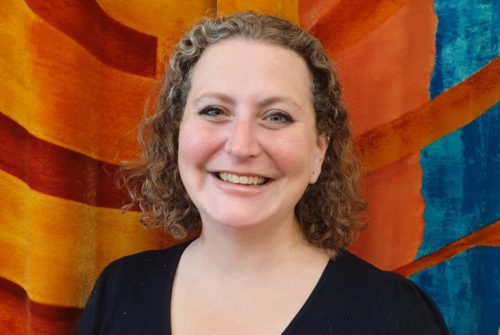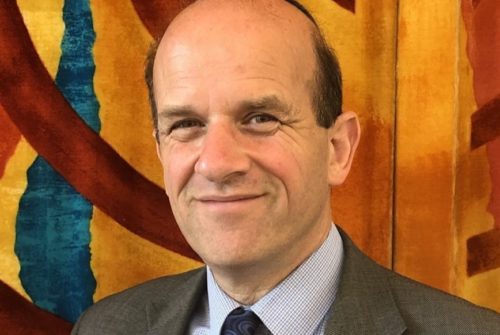In the Israel Museum in Jerusalem there is a stunning building known as the ‘Sanctuary of the Book’. Inside are some of the most incredible treasures for a lover of Jewish texts, and some of the most challenging!
Their story begins in 1947, when a young shepherd found some ancient rolled up manuscripts in a cave in Jordan. More scrolls were found nearby soon afterward. Now they are all known as the Dead Sea Scrolls because they were found near the Dead Sea. Some of the scrolls contain parts of one of the earliest versions of the Hebrew Bible. Others are writings of a fascinating group of Jews called the Essenes, who lived in the area more than 2,000 years ago.
The Dead Sea Scrolls are written on leather, papyrus and even copper. After being rolled up for so long they were dried out and would not unroll without breaking into pieces. Scholars spent years working out ways to unroll them without destroying them. Many are now exhibited in the Sanctuary of the Book.
I’ve shocked several students talking about these scrolls recently, because they demonstrate that the Tanakh, the Hebrew Bible, has not always been exactly the text we read today. Textual variations between the two manuscripts include differences in word choice, spelling, and the presence or absence of certain verses or passages. Today, of course, we all use a standardised text, which was set by a group known as the Masoretes between the 6 and 800’s CE. We have the masoretes to thank not only for a uniform text around the Jewish world, but for an agreed upon vowel system (changing the vowels of a word can change the meaning) the singing notes or trope, and a series of commentaries that they set into the text as standardised. One of those is contained in the very first word of this week’s portion – Vayikra. The Alef on the end of the word is written in every scroll around the world, as visibly smaller than the rest of the word. This is the only place in Torah an alef like this is found, though not the only place that the masoretes cemented commentaries through changed letters, singing notes or form of the text.
This has of course been the subject of many different Rabbinic interpretations, because the masoretes may have set the tradition, but that hasn’t stopped Jews finding multiple ways to explore what it might possibly mean. The Kli Yakar, Rav Shlomo Efraim Luntshits who lived and taught in the 16th century, argues that the alef is small to remind us of the potential every Jew has to learn and to grow in Torah, something that is not only the journey for those like Jim, who today is celebrating his Jewish learning and growth so far, but for every one of us, who need to be always learning and growing, and should remember to be humble in our approach to how much we know!
The Rosh, or Rabbeinu Asher from the 13th Century, suggests the small alef is intended to remind us of the humility of Moses more specifically. Midrash teaches that Moses wanted, in his humility, to describe his conversation with God as vayikrah (from the root kof reish hey’ meaning ‘And it happened’. God however wanted to write ‘Vayikra’ kof reish alef – and God called – directing the speech more towards Moses than anyone else. The words sound the same, but mean different things. So a compromise had to be found. In partnership with one another, God and Moses settled on writing the word as God wanted it, but with a small alef, so it might go almost unnoticed. God’s way of communicating was preserved, as was Moses desire to be seen as leading from within the community, not above it, and thus the small alef indicates his humility.
In the Women’s Torah Commentary, Rabbi Shohana Boyd Gelfand suggests my favourite interpretation of our small alef. Similar to the Rosh she suggests this is all about communication, but her take is that this is about God modelling good communication skills. She draws on the kabbalistic idea of tzim tzum; that God withdrew into Godself in order to make space for creation, and to be in relationship with it. God continues with Moses in this model; were God to take up all the space, there would be no room for communication and relationship, it would just be a monologue. She writes “Moses can now be a partner, rather than a passive recipient. Thus, it becomes clear from the very first word that the content of the book is about relationships.
The lesson that Rabbi Boyd Gelfand wants us to take away from the masoretes small alef, is that being in relationship, whether with God or with one another, we cannot take up all the space. We need to hear one another, and make space for one another. That contraction of God is an idea I take a lot of solace from, as it is also what creates the space for free will, human dignity, and for things going terribly wrong.
All that from one little alef. We will probably never know what exactly the masoretes meant by setting the text exactly as they did, but perhaps that is part of the point. While trying to give us a unified starting point, a consistent shared text, we still do a Ben Bag Bag suggests in the Mishnah, and continually turn it and turn it for everything is in it. As we approach Pesach, we know that every seder will be unique and different, influenced by family traditions and different personalities, as well as multiple interpretations of every page of the Haggadah. The matza we eat is meant to be a poor mans bread (though today it can impoverish you just to buy it!) but it is also meant to be a reminder of the humility we should approach life with, part of which is making sure there is room to hear one another, to allow a different viewpoint to be heard, and to somehow hold all of that as we strive for greater freedoms together. May this be God’s will, while God gives us space to discover. Shabbat Shalom.


